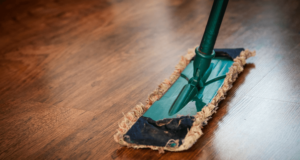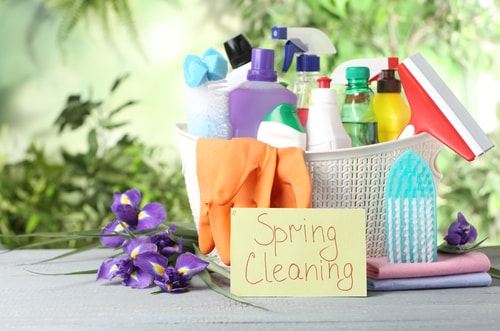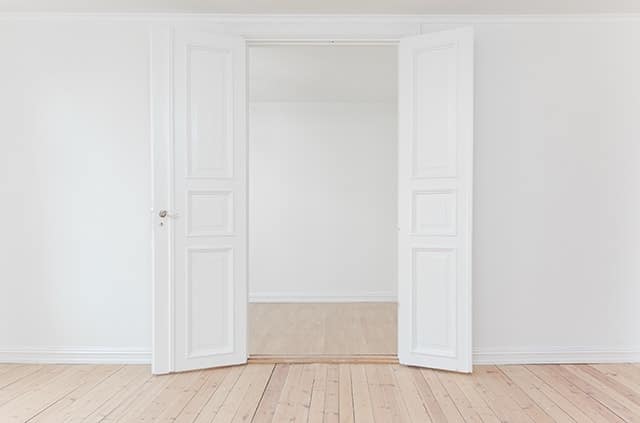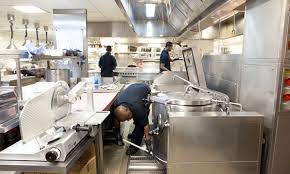How to Clean the House Quickly – and Thoroughly
So, you have been looking forward to hosting this dinner party for two weeks, but two hours before it’s due to start you look up and realise the house is an absolute state. Every time, right? If you’re in need of finding out the quickest way to clean your house, you’ve come to the right place: these house cleaning tips will help you address that mess in no time
Go top to bottom
Want to know how to clean your house fast? The first thing to remember is that, like everything else in life, the laws of gravity apply to dust and grime. This downward settling of dust has everything to do with your speedy cleaning strategy. Firstly, it means that if your house has multiple floors, you need to start on the top floor. Otherwise, the dust from upstairs will settle on the lower floors and you might find you have to start again.
Make a house-cleaning checklist
This might seem like strange advice when you’re in a rush, but it really is worth taking five minutes to jot down a house-cleaning checklist. Why? Well, some of the things you do when you have longer to clean might be unnecessary when you’re working out how to clean the house quickly.
Work smart
Once you have your house cleaning checklist, figure out the quickest way to clean your house. What order does it make sense to clean the rooms in? Where should you start in each room? What’s the last thing you should do in there, and what might you not have thought of? The moments you spend doing this will save you a lot of time and frustration once you get to work.
Remember the essentials
When you’re thinking about how to clean your house fast, it’s easy to get overwhelmed by the bigger tasks and forget about the little things. Here are a few you might not have thought of:
Make sure you have clean towels out
Change bed linen if your guests are staying overnight
Vacuum your sofa
Air any stuffy rooms by opening the windows an hour or so before they arrive
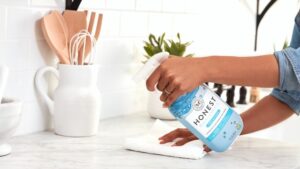
Guide To A Thorough House Cleaning
Regular deep cleaning is ideal for your home – but not everyone has the time to do it. More often than not, you’ll have to wait until the end of a busy season before finding some time for a major clean-up. Although daily weekly dusting and vacuuming may be sufficient for maintenance, it’s still necessary to dive into the nooks and crannies and clean every neglected area of your house at least once a year. That’s why we’ve come up with a guide on how to tackle a thorough cleaning for every room in your home.
Tips Before You Start
Depending on where you live, you may need to consider a mold inspection. Mold is harmful to health and, if left unchecked, could damage your home and, at the same time, cause illness to you or any of your family members. Also, removing clutter and getting rid of junk makes cleaning a lot easier. If you have a lot of garbage piled up over the years, you can hire a junk removal service to take care of the hauling and disposal. Lastly, plan how you want to approach the cleaning process. You may also want to take stock of your cleaning supplies and tools to ensure that you have everything you need before you start.
Bathroom
There is nothing more frustrating than a grimy and unkempt bathroom. After scrubbing all the essential fixtures like the tub, toilet, and shower, you need to focus your attention on the hard to reach areas. Start with light fixtures, mirrors, and windows. Make sure that you wipe down all corners and edges to get rid of dust and grime. If there is exposed grout, you can use a specialty grout cleaner or make one using some baking soda and white vinegar. Don’t forget to clean out drawers and disinfect all surfaces, especially doors and handles.
Bedroom
The first thing you need to do is remove all drapes, beddings, and rugs. Wash them in warm water to disinfect and kill dust mites. If your mattress has a lot of stains, you can consider having it steam cleaned. Carefully vacuum all surfaces, especially behind and underneath furniture. Clean and wipe down closets, drawers, and cabinets.
Kitchen
Cleaning the kitchen could take time; that’s why it’s best to break down your task into manageable steps. Start with hard to reach areas like cabinets and cupboards. Clean the top, corners, and inside using a damp cloth. While cleaning surfaces, you can start defrosting your refrigerator. The oven is harder to clean, so you might need to soak the stains in a mixture of baking soda and vinegar. The same applies to your microwave. Most importantly, throw away old sponges and replace dish towels. Also, don’t forget to disinfect all surfaces after cleaning.

Insane But True House Cleaning Facts!
Cleaning Burns Calories
Cleaning for two hours burns 200 calories. Who needs to get on the elliptical when you can just mop the floors?
Blenders Clean Themselves
Did you know blenders clean themselves?
You read correctly! Just fill your blender with water and add a few drops of soap. Turn the blender on for a few seconds and rinse after. Ta-da!
The Kitchen Sink Has More Germ Than The Toilet
The kitchen sink contains more germs than your toilet. Yes, you actually need to clean your kitchen sink, not just rinse it out.
You Can Clean Your Shower Curtain In The Washing Machine
Did you know you can clean a shower curtain in the washing machine?
No more scrubbing for half an hour trying to get muck off your shower curtains. Just pop them in your washing machine’s gentle cycle with a pint of vinegar and press “start.” Aren’t washing machines one of the best inventions ever? If you feel like getting even more done, you can try cleaning your washing machine too.
Dust Is Mostly Made Up Of Dead Skin Cells
You know all those dust particles lying around? Well, roughly 70-80% of them are made up of dead skin cells. And you thought your pet shed a lot!
Mold Can Grow In Your Trash Can
Did you know mold can grow at the bottom of the trash can?
Mold loves moisture so add 1/2 cup of borax to the bottom of the trash can to absorb mold-causing dampness.
Mattresses Carry Dust Mites
An average mattress contains anywhere from 100,000 to 10 million dust mites. That’s it. We’re sleeping on the floor from now on.
You Can Cook A Sponge
Did you know you can cook a sponge?
Not to eat, to clean! Pop a wet sponge in the microwave for two minutes to kill germs and prolong the life of your sponge. Make sure the sponge is very wet; a dry sponge could start a fire!
Mouthwash Can Clean Floors, And The Crazy But True Story Of
Listerine
Mouthwash can clean floors. If you run out of cleaner, add a capful of mouthwash for every gallon of water and you’ll be good to go. It’s a long story, but to sum it up, Listerine was originally developed to be a surgical antiseptic. However, they realized that surgical antiseptics were only marketable to a small group of professionals. In the hopes of increasing sales, the company began to market Listerine as a floor cleaner – as well as a cure for Gonorrhea! So where does mouthwash come in?
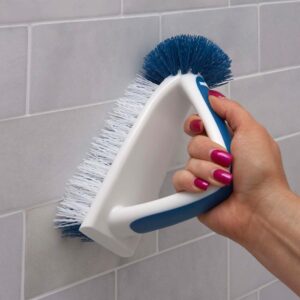
This interactive cleaning guide will make your life so much easier
How to clean upholstery, from couches to car interiors
Does your upholstered furniture look dingy and tired? Is your couch in desperate need of a clean? What about your car? Upholstery, like carpet, needs regular attention
If you’re going to hire a professional: Bisaillon recommends having upholstery cleaned by a certified cleaning technician every 12 to 24 months — or more frequently in households with small children or pets. To assure that you’re getting a qualified cleaner, look for certification by International Cleaning and Restoration Association or International Institute of Cleaning and Restoration. Before booking an in-home cleaning, request the name of the technician and his/her ICRA or IICR registration number.
Vacuum: Use upholstery and crevice attachments (they make a huge difference!) to pick up crumbs and dust on a weekly basis.
Clean spills immediately: Blot them up ASAP. If the spill leaves a spot, follow instructions on the fabric care label. If it’s safe to use water, blot the area alternately with a damp towel and a dry towel to remove it.
Treat the stain: As always, follow cleaning instructions on the fabric care label. For stains on silk and antique fabrics, consult a professional. Otherwise, if the stain is from an organic source, like mustard, coffee or other foods, Bisaillon suggests lightly misting it with 3 percent hydrogen peroxide.
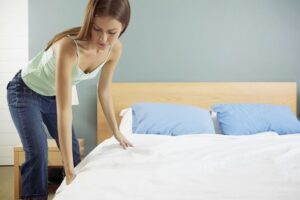
How to clean a TV screen, computer screen and more
Is your phone screen covered with greasy smudges? Is your tablet dotted with doughnut debris? And what about your TV screen? Let’s be honest, it’s definitely covered in dust. It’s time to clean them all and see the e-world as it was meant to be. There’s no need to put this chore off — it’s so easy you’ll wonder why you hadn’t done it sooner. Before getting started, consult the owner’s manual for specific instructions, and be sure to unplug all devices.
Dust it
To remove dust, use a microfiber cloth and lightly wipe the screen, moving in one direction and working from top to bottom. hat’s all it usually takes to remove dust, grease, oil, dirt and 99 percent of bacteria that’s on the screen.
Use the right cloth
Not all microfiber is the same. recommends cleaning screens using only cloths specially made for electronics, like E-Cloth or MagicFiber, because they have shorter, finer fibers. And more fibers means faster results.
For stubborn smudges…
Slightly dampen a corner of the microfiber cloth and wipe the area lightly. (Too much pressure will damage the screen.) Dry with an unused portion of the cloth. You’ll know it’s time to move to a new part of the cloth (or wash it) when it starts leaving dust behind.
What NOT to use
Don’t apply too much pressure. Use a light hand to prevent damage to the screen or the anti-reflective coating. Never use abrasive cleansing cloths or pads since they’ll scratch the screen. And avoid any products that aren’t recommended in the owner’s manual, including window cleaner, ammonia, vinegar, ethyl alcohol, powdered cleanser, benzene or paint thinner.
